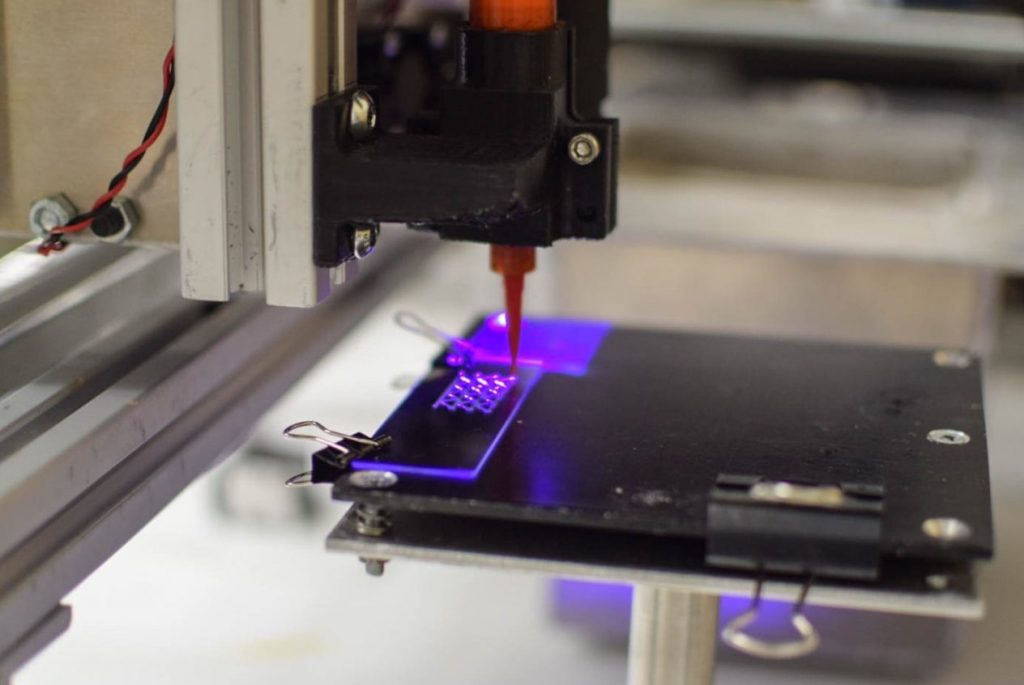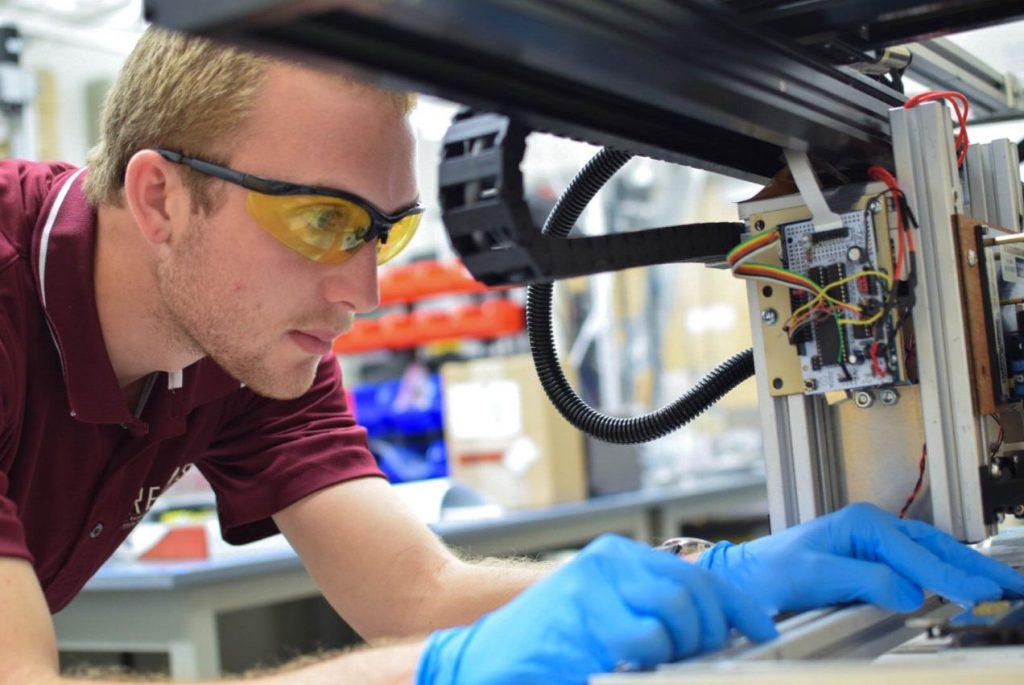A team of researchers in the Macromolecules Innovation Institute (MII) at Virginia Tech have developed direct ink writing (DIW) as a method for processing Kapton in 3D. This so-called “ultimate” polymer, with a high degradation temperature, infallible solvent resistance and excellent insulation properties, is setting the stage for a new grade of high performance multimaterial 3D printing, and additive manufacturing in electronics.
A research article describing the Kapton DIW 3D printing method was recently published in ACS Applied Materials & Interfaces journal. Timothy Long, Director of MII and co-author of the article comments, “[This polymer] can withstand all kinds of harsh environmental insults: radiation, high temperature, chemical reagents,”
“It’s one of these molecules that is the ultimate in terms of performance.”
3D printing the unprintable
The DIW project is an expansion on a previous SLA-based Kapton 3D printing project conducted by the Department of Mechanical Engineering’s Design, Research, and Education for Additive Manufacturing Systems (DREAMS) Laboratory last year. The task of the DREAMS Lab, and its interdisciplinary collaborators at MII, is to unlock new potential applications of Kapton which commonly only exists in 2D sheets (usually gold and wrapped around rocket engines). Speaking to me at the time of that research, Dreams Lab director and associate professor Dr. Christopher Williams explained, “The reason why Kapton is only available as a 2D material is because it is very difficult to process,”
“It can’t be processed as a melt (some say its degradation temperature is below its melt temperature), and it isn’t soluble in anything; this rules out both traditional materials processing approaches and most additive manufacturing processes.
“Because of this, it can’t be printed/cast/molded into a 3D shape, and has been only offered as a 2d material.”
Despite these challenges, Dr. Williams and the DREAMS Lab succeed in 3D printing Kapton in a photopolymer solution.
“As soon as we were able to print Kapton, people asked us about applications,” adds Williams, “The answer we often gave was printed electronics, but that’s challenging to do in stereolithography. This new technique could really enable that as we look towards simultaneous printing of conductive materials and this excellent insulator.”

DIW with Kapton
The latest MII technique for processing Kapton in 3D is a UV-assisted DIW method. UC-curable inks used in this process are derived from the Kapton/photopolymer solutions developed in the DREAMS Lab’s previous Kapton SLA research.
After 3D printing, or “writing” these inks, known as organogels, are dried in a vacuum at 200ºC creating some shrinkage. In a final step, the printed structure is then turned from a polyimide into an imide of Kapton, in a nitrogen atmosphere heated to 400ºC. Together both treatment processes result in a 45% isotropic dimensional shrinkage, and thought the team notes that this “might complicate the production of complex features,” in preliminary tests “part fidelity was maintained.”
Using the three step process, MII researchers demonstrated the ability to create several complex lattice structures via DIW which “demonstrated high thermal stability and good mechanical strength.”
Furthermore, the study’s authors conclude, “Overall, UV-DIW of PAA DMAEMA ink possesses potential for future multimaterial 3D printing of components that
are resistant to solvents, extreme temperatures, and radiation.”
The next steps for the group is to further investigate the material composition of these 3D printed parts, then trial the method with some more complex structures.

The full results of this experiment are available in the article “Ultraviolet-Assisted Direct Ink Write to Additively Manufacture All-Aromatic Polyimides” which was co-authored by Daniel A. Rau, Jana Herzberger, Timothy E. Long, Christopher B. Williams.
Read all of the latest 3D printing research in the 3D Printing Industry newsletter, on Twitter and on Facebook. Join 3D Printing Jobs now to search for the next step in your academic career.
Featured image shows DIW 3D printed Kapton lattice after thermal treatments. Photo via VT News


